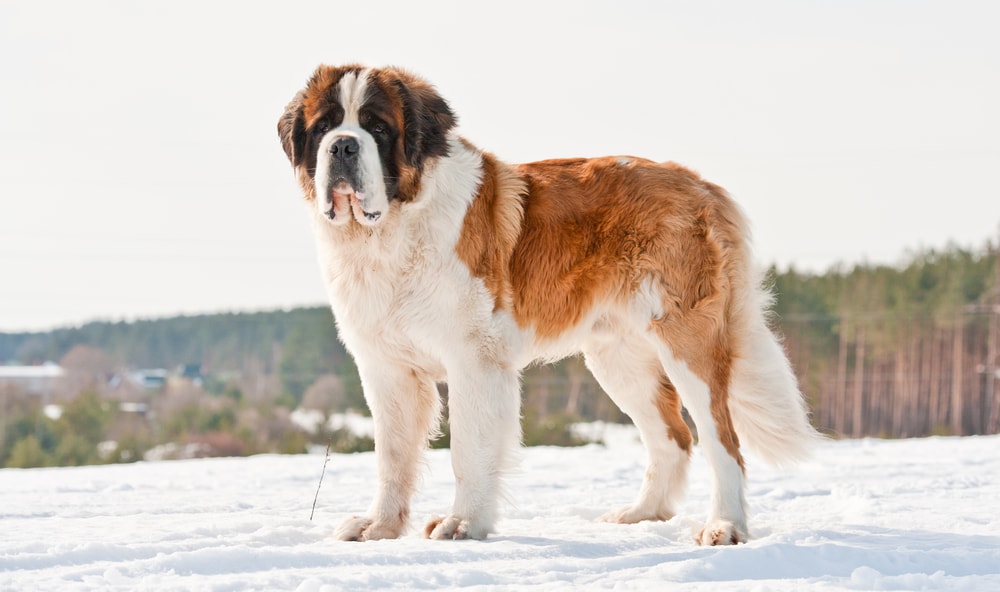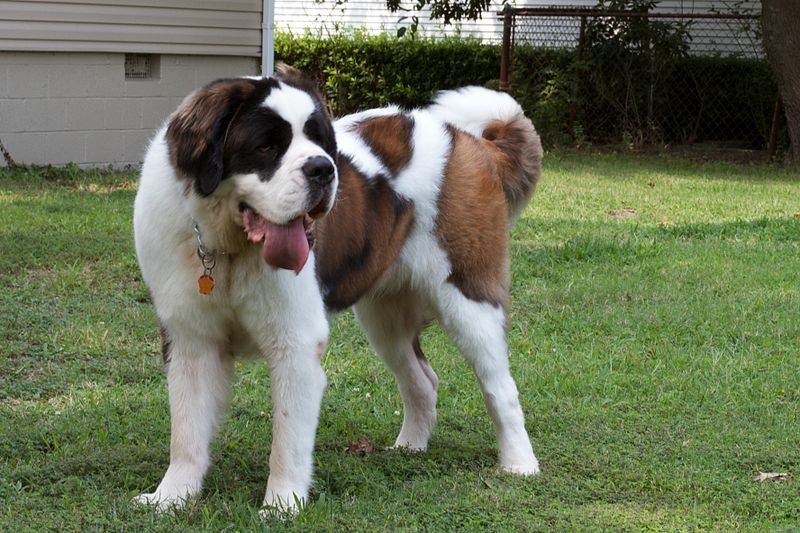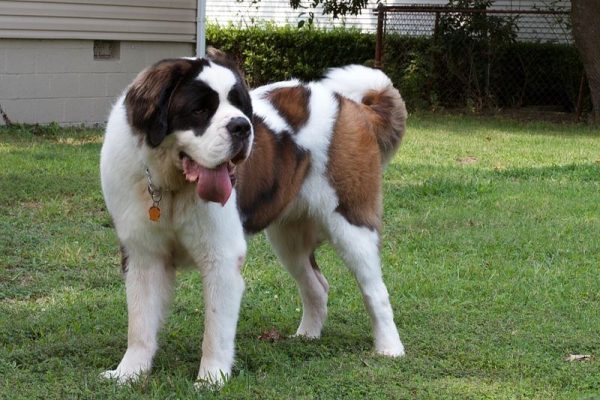It’s hard not to fall in love with the Saint Bernard! With their slobbery jowls and loving hearts, these giant dogs have made themselves famous worldwide and have been popular family dogs for decades!
If you’ve been thinking about adding a Saint Bernard to your family but want to learn more about their exercise needs, you may or may not be glad to hear that even though they are pretty huge, the exercise needs of the Saint Bernard are moderate; only about 30 minutes a day will suffice. If you’d like to learn more, we’ll get into the details of the best exercises for a Saint Bernard and touch on some of their care needs.
How Much Exercise Does the Saint Bernard Need?
The Saint Bernard is an extra-large breed renowned for being a gentle giant. They have often been called ‘nanny dogs’ for their exceptional gentleness, protectiveness, and patience around children.
Because they are so large, some might think they would have demanding exercise needs, but they are not terribly energetic and have a very easy-going temperament.
Generally, Saints require about moderate exercise; a long daily walk is usually enough. You’ll want to walk at a brisk pace, particularly since Saints have a longer stride that you’ll need to keep up with.
Beyond the daily walks, you should also include some play sessions to get their heart rate up, like throwing a ball for a bit. A 30-minute play session is usually enough, but this can be divided into two or three smaller sessions during the day.

How Do You Exercise a Saint Bernard Puppy?
Care must be taken with puppies, particularly large breed puppies because their bones and joints are still growing. Too much jumping and full-on running will strain their joints and bones and can lead to joint and bone issues.
You shouldn’t allow your puppy to run on hard surfaces like sidewalks or any high-impact exercises. And also, avoid long-distance walks until they are fully grown. Large breeds also take longer to mature, so your Saint Bernard isn’t technically fully grown until they are about 2 years old.
When playing with your puppy, it’s best to keep them on soft ground and prevent them from jumping off from high surfaces. Too much impact on their developing joints can lead to future orthopedic issues and arthritis.
And while this is critical for Saint Bernard puppies, many of these rules will also apply to adult dogs. Overexertion, jumping from high surfaces, and obesity can develop into bone and joint problems.
What Are Some Activities You Can Do With Your Saint Bernard?
Saint Bernards are not the most active dogs and tend to be somewhat lazy and not overly playful. You’ll have to encourage your Saint for walks and playtime.
Avoid walking them during the hottest parts of the day. This breed comes from the Swiss Alps, so they have heavy double coats and can overheat pretty quickly. They will show some stubbornness if it’s too hot for a walk, but they will be livelier when cold. Take them to the dog park, and if you live in a snowy and mountainous area, all the better!
Also, take them swimming – this is a great way to cool them off in the summer, and it’s low impact. You can also involve them in dog sports not meant for endurance, such as obedience, drafting, and carting.
Just remember you shouldn’t encourage your Saint to jump by throwing things up in the air for your dog to jump for. Hard landings and repetitive motions are very bad for your Saint at any age.

Climate Considerations With a Saint Bernard
We’ve covered the overexertion and high-impact aspects that need avoiding, plus no exercise when it’s hot. But if you live somewhere where it’s always hot without the four seasons, you might need to look for a breed that can handle the weather, which is not the Saint Bernard.
You should also look for a different breed if you want a jogging or biking partner, which, again, is too strenuous.
Grooming the Saint Bernard
Grooming the Saint Bernard during the shedding seasons of fall and spring is not for the faint of heart! They will need daily brushing at these times and be prepared for a storm of dog hair! But for the rest of the year, they only need brushing about once or twice a week.
Plus, be prepared for a ton of drool! Every time they shake their heads, you can expect drool hitting a lot of surfaces in your home.
And beyond the usual nail clipping and teeth brushing, you’ll need to focus on cleaning the skin folds on their faces. The folds need to be cleaned but also kept dry. And ear cleaning is essential as well, particularly for dogs with folded ears like the Saint.

General Care of the Saint Bernard
These dogs are friendly and make incredible family dogs! They are renowned for their patience and protectiveness with children. However, remember that these dogs are ginormous and might accidentally knock a small child over.
You also need a large space and a fenced yard – the Saint Bernard is too large for an apartment or condo. They get along well with other pets, provided they are well-socialized and have been introduced to the other pets appropriately.
Dog food is what is really going to take a chunk of your money. Part of owning a giant breed means spending a lot on food. It should be high-quality dog food that is meant for a giant breed and your dog’s current age and activity level.
Finally, training the Saint isn’t terribly difficult, but training them before they get too large is essential. Having an enormous dog that doesn’t have basic training will be a challenge, to say the least!
Health Conditions
As we’ve discussed, Saint Bernards are quite prone to joint problems as well as a number of other health conditions:
- Hip dysplasia
- Elbow dysplasia
- Bloat
- Gastric dilatation volvulus
- Osteosarcoma
- Lymphoma
- Wobbler syndrome
- Entropion
This is not to say that your Saint Bernard will experience any of these health conditions. But it’s a good idea to be familiar with these issues so you know what to watch out for.
Final Thoughts
The Saint Bernard’s exercise needs are moderate just as long as you remember to not overdo it. And you’ll need to prevent them from jumping – this will only lead to potential injuries, particularly if they are puppies.
The Saint Bernard is an incredible breed that isn’t for everyone – you need to have a large enough space and patience with their shedding and drooling. Plus, even the climate where you live is a factor since the Saint does better with colder weather.
But they really are wonderful companions, and if they sound like a good fit for you, you can’t go wrong with the Saint Bernard!
Featured Image Credit: Alan Levine, Wikimedia Commons












